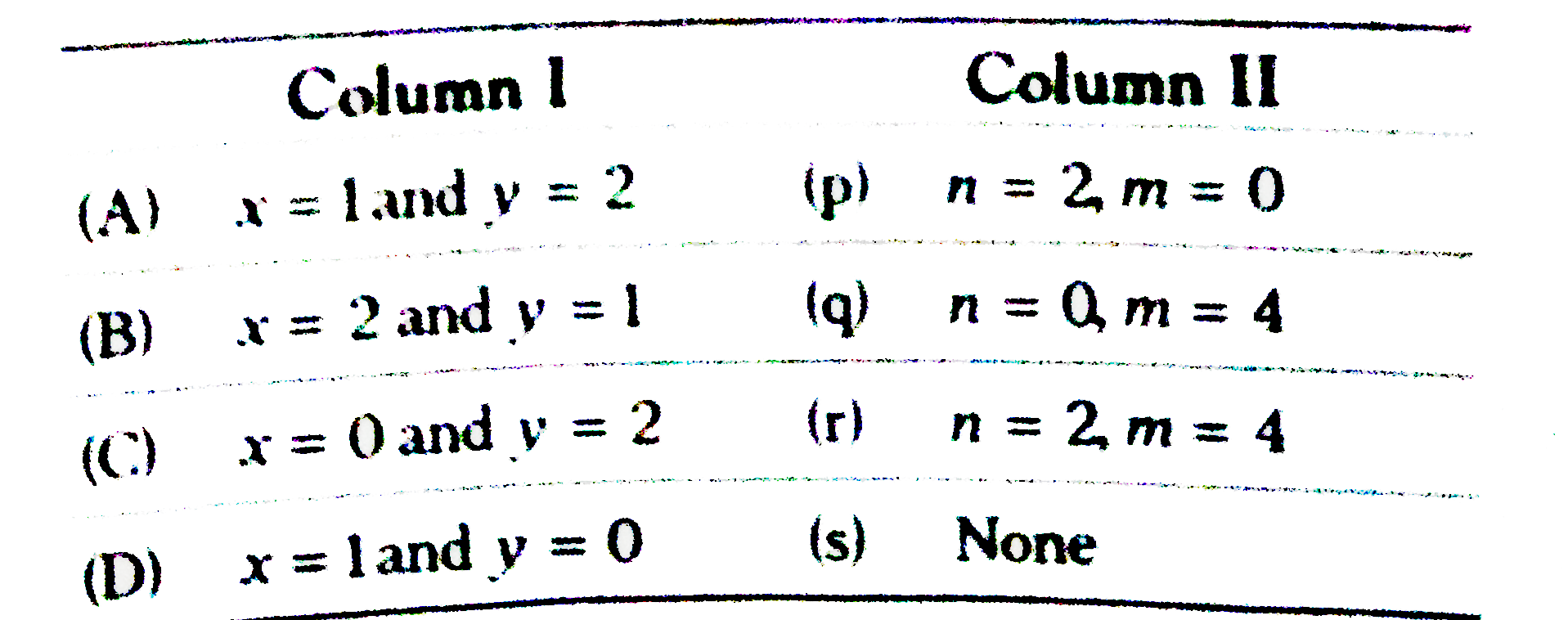Staements I: .zX4 undergoes 2α-decays, 2β-decays (negative β) and 2γ-decays. As a result, the daughter product is .z.−2XA−B.
Staements II: In α-decay, the mass number decreases by 4 unit and atomic number decreases by 2 unit. In β-decay (negative β), the mass number remains unchanged and atomic number increases by 1 unit. In γ-decay, mass number and atomic number remain unchanged.
Statement-1 is true, Statement-2: is true, Statement-2 is a correct explanation for Statement-1.
Statement-1 is true, Statement-2: is true, Statement-2 is NOT a correct explanation for Statement-1.
Statement-1 is true but statement-2 is false
Statement-1 is false, Statement-2 is true
The correct Answer is:A
To solve the problem, we need to analyze the changes in the atomic and mass numbers of the parent atom zXA after it undergoes the specified decays.
1. Identify the Initial Values:
- We start with a parent atom zXA where A is the mass number and z is the atomic number.
2. Alpha Decay:
- In alpha decay, the mass number decreases by 4 and the atomic number decreases by 2.
- Since there are 2 alpha decays:
- Mass number after 2 alpha decays: A−2×4=A−8
- Atomic number after 2 alpha decays: z−2×2=z−4
3. Beta Decay:
- In beta decay (negative beta), the mass number remains unchanged, while the atomic number increases by 1.
- Since there are 2 beta decays:
- Mass number remains: A−8
- Atomic number after 2 beta decays: (z−4)+2=z−2
4. Gamma Decay:
- In gamma decay, there is no change in either the mass number or the atomic number.
- Therefore, after 2 gamma decays:
- Mass number remains: A−8
- Atomic number remains: z−2
5. Final Daughter Product:
- After all the decays, the daughter product can be represented as z−2XA−8.
Conclusion
The final daughter product after the specified decays is z−2XA−8, which confirms that Statement I is incorrect as it states the daughter product should be zX(A−B) instead of z−2X(A−8).
Statement II is correct as it accurately describes the changes in atomic and mass numbers during alpha, beta, and gamma decays.
Final Answer
- Statement I: False
- Statement II: True
---
- We start with a parent atom zXA where A is the mass number and z is the atomic number.
- In alpha decay, the mass number decreases by 4 and the atomic number decreases by 2.
- Since there are 2 alpha decays:
- Mass number after 2 alpha decays: A−2×4=A−8
- Atomic number after 2 alpha decays: z−2×2=z−4
- In beta decay (negative beta), the mass number remains unchanged, while the atomic number increases by 1.
- Since there are 2 beta decays:
- Mass number remains: A−8
- Atomic number after 2 beta decays: (z−4)+2=z−2
- In gamma decay, there is no change in either the mass number or the atomic number.
- Therefore, after 2 gamma decays:
- Mass number remains: A−8
- Atomic number remains: z−2
- After all the decays, the daughter product can be represented as z−2XA−8.
The final daughter product after the specified decays is z−2XA−8, which confirms that Statement I is incorrect as it states the daughter product should be zX(A−B) instead of z−2X(A−8).
- Statement I: False
- Statement II: True
Topper's Solved these Questions
Similar Questions
Staements I: .zX4 undergoes 2α-decays, 2β-decays (negative β) and 2γ-decays. As a result, the daughter product is _(z−2)XA−8.
Staements II: In β-decay, the mass number decreases by 4 unit and atomic number decreases by 2 unit. In β-decay (negative β), the mass number remains unchanged and atomic number increases by 1 unit. In γ-decay, mass number and atomic number remain unchanged.
View SolutionA nucleus undertgoes β-decay. How does its (i) mass number (ii) atomic number change ?
View SolutionThe emission of an α− particle reduces the mass of nuclei by 4 units and increases its atomic number by 2.
View SolutionAssertion : After emission of one α-particle and two β-particles, atomic number remains unchanged.
Reason : Mass number changes by four.
View SolutionAn elementX decays , first by positron emission and then two α-particles are emitted in successive radiactive decay. If the product nucleus has a mass number 229 and atomic number 89, the mass number and atomic number of element X are.
View SolutionAssetion In α-decay atomic number of daughter nucleus reduces by 2 units from the parent nucleus.
Reason An α particle carries four units of mass.
View SolutionMatch the column in radioactive decay process of nucleus with atomic number Z and mass number A.

View SolutionFrom a radioactive substance x numbers of α-particles any y numbers of β-particles are emitted. As a result atomic number decreases by n and mass number by m. Then, match the following two columns.

View SolutionA uranium nucleus (atomic number 92, mass number 231) emits an α-particle and the resultant nucleus emits a β-particles. What are the atomic and mass numbers of the final nucleus? .
View SolutionA nucleus .22990X under goes α-decay and β-decay and the resultant nucleus is .18173Y. Find number of β-decay.
View Solution
